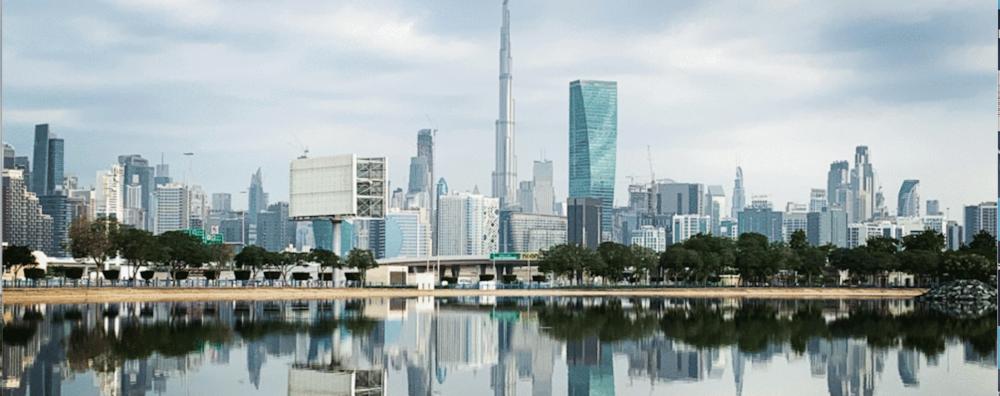“I’ve found you a new job!” I told DH excitedly the other day. “When you get bored of flying to exotic destinations with an army of attractive flight attendants, you could be a cloud buster!
“Just think, you’d be home every night!”
I’m not sure if it was the latter that was the cause of the nonplussed look, or the fact that in aviation you normally avoid cumulus clouds, but something about his response told me that while he did nearly end up cloud seeding in Texas some years ago, he wouldn’t be applying.
‘Franken-rain’ has been a topic of conversation in Dubai this week, because we’ve been having some really unseasonal, lovely weather. By now, we’re usually holed up in air-conditioned, tightly sealed bubbles, but this week windows have been thrown open to let in cooler air, the sound of thunder and the scent of fresh rain.
Really, really odd for this time of year.

The UAE dabbles in cloud seeding from time to time, with thunderous success this week. Photo via Gulf News
My suspicions were raised when a friend put on Facebook: “Awesome weather today! Thanks Sheikh Mo for the ionization!” And, if you think about it, modifying the weather in the UAE is something we’d all love to see. Imagine if the pleasant winter temperatures could last just a little bit longer – into mid-May and beyond, giving us extra time to enjoy outdoor activities and extending the tourist season.
My hunch was confirmed when I read in the press that the National Centre of Meteorology and Seismology (NCMS) has been seeding clouds since April 21 to coax the wet stuff out of them. “We are only enhancing the rainfall,” a NCMS scientist was quoted as saying – in other words, the showers are only in part due to the cloud seeding, but manufactured raindrops have indeed fallen.
So how do you persuade a wannabe rain cloud to douse the dry desert below? (and not sail on to a neighbouring country to shed its watery load elsewhere?) Here comes the science – and bear with me, it’s fascinating. Apparently, they study the weather charts in the morning to work out when convective cloud formation is likely to occur. The pilots are briefed and remain on stand-by, while the scientists continue to monitor radar images to make sure they catch the beginning of cloud formation (known as the initial stage of the cloud).
Once the operation starts, a plane flies into the lower third of the cloud, where the updrafts are more prevalent, and releases a chemical salt that gathers the tiny droplets of water in the air into larger ones. When the air has no more resistance to hold them, rain falls.
Impressive, no? And, in an arid country where there’s a shortage of water resources, giving nature a little helping hand in order to boost groundwater storage certainly sounds a good idea. But it does make me wonder: what on earth is IN those raindrops falling on our heads?
Expat Telegraph: How do we feel about the UAE’s Franken-rain?
